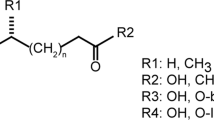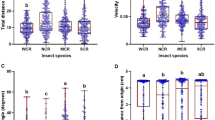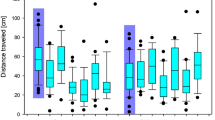Abstract
INVESTIGATIONS on the use of nematodes of the genus Neoaplectana for the control of pasture insects have led to studies on the behaviour of an unnamed species1 referred to as ‘DD 136’ (ref. 2). When infective-stage juveniles of DD 136 were mixed with soil they migrated to the surface and were observed to move in either of two ways, by ‘bridging’ or by ‘leaping’. In the former the nematode assumed an erect position and waved its anterior end until it came into contact with another portion of the substrate, thus bridging the gap. The posterior end was then drawn up. If no ‘bridge’ was achieved, the waving motion eventually stopped and the nematode remained immobile in an erect position adhering to the soil by its bent ‘tail’ which lay along the soil surface (Fig. 1A). It would periodically form a loop by bending the anterior three-quarters of the body until contact was made near the posterior end, where a drop of water formed (Fig. 1B). From this position nematodes were observed to project themselves through the air for distances up to about 10 mm (Fig. 1C–F).
This is a preview of subscription content, access via your institution
Access options
Subscribe to this journal
Receive 51 print issues and online access
$199.00 per year
only $3.90 per issue
Buy this article
- Purchase on Springer Link
- Instant access to full article PDF
Prices may be subject to local taxes which are calculated during checkout
Similar content being viewed by others
References
Dutky, S. R., and Hough, W. S., Proc. Ent. Soc. Wash., 57, 244 (1955).
Welch, H. E., and Briand, L. J., Canad. Ent., 93, 759 (1961).
Author information
Authors and Affiliations
Rights and permissions
About this article
Cite this article
REED, E., WALLACE, H. Leaping Locomotion by an Insect-parasitic Nematode. Nature 206, 210–211 (1965). https://doi.org/10.1038/206210a0
Issue Date:
DOI: https://doi.org/10.1038/206210a0
This article is cited by
-
Building Magnetoresponsive Composite Elastomers for Bionic Locomotion Applications
Journal of Bionic Engineering (2020)
-
Nictation, a dispersal behavior of the nematode Caenorhabditis elegans, is regulated by IL2 neurons
Nature Neuroscience (2012)
-
How and why a parasitic nematode jumps
Nature (1999)
Comments
By submitting a comment you agree to abide by our Terms and Community Guidelines. If you find something abusive or that does not comply with our terms or guidelines please flag it as inappropriate.



